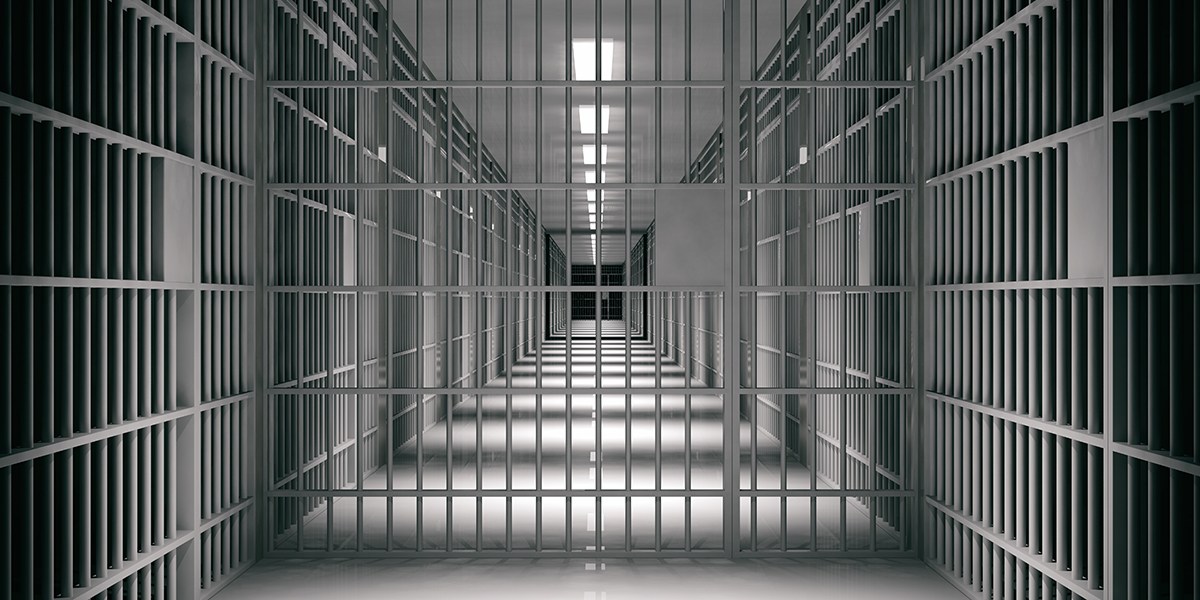
By: Destiny Redmond, MS, LPC, NCC, CCTP, DBH Candidate at Cummings Graduate Institute for Behavioral Heath Studies, written for the course DBH 1001-2: Success in Doctoral Studies
Mentally Ill and Incarcerated: Illness Severity in BIPOC Populations
Incarcerated individuals from BIPOC populations or Biracial, Indigenous and people of color make up a significant amount of the correction population. According to the National Association for the Advancement of Colored People criminal fact sheet, thirty-four percent of people of color make up the United States population, while fifty-six percent of the incarceration population is made up of African Americans and Hispanic people (2022). Therefore, the data shows that a disproportionate population represents correctional facilities. The mentally ill also make up a disproportionate number of incarcerated individuals (Held et al., 2012). Reviewing this collective data can assist researchers in understanding the scale of the issues among BIPOC populations, specifically people of color with mental illness.
Literature Review
While incarceration is one factor that can affect mental illness, factors inside correctional facilities can affect mental health, such as environment and systemic issues (Cuellar & Cheema, 2012). Furthermore, the findings can also help researchers generate additional questions about symptom severity and risk factors in correction facilities. In the following review, factors within the correctional environment, systemic issues, and research data on newly implemented programs to combat these issues will be explored from previous literature.
Systemic Issues and Mental Health in Corrections

As previously mentioned, people of color make up a large amount of the correctional population. Specifically, in the United States, the odds of going to jail or prison are significantly higher being a person of color than Caucasian individuals. For example, one in three black men and one in six Latino men born in 2001 will be incarcerated at some period of their lifetime (Nowotny et al., 2021). During this time of incarceration, the systemic issues are significantly amplified as individuals of color, once incarcerated, may not get the support acquired. If they are a person of color with a mental illness they may experience an even more significant issue being treated for their mental illness. For example, people entering a correctional facility with a mental illness can expect to get comprehensive medical care, which includes mental health; however, many individuals ultimately can experience delayed treatment. According to Canada (2021), correction facilities were not built to assist with mental health care, and issues with staffing, overpopulated areas, and lack of funding create challenges for those who need services. Therefore, inmates can ultimately wait for long periods before they receive care.
According to Canada’s (2021) article, the researcher looked into data from a program that included integrating correctional healthcare and community healthcare systems in eight Midwest counties. Specifically, this data includes systems such as emergency dispatch, legal data, and homelessness information to assist with monitoring disparities among people of color (Canada, 2021). However, the data did not show any significant disparities. In the results, there were no disparities in services for mental health while incarcerated, however, the data did show a disparity in white inmates being more likely to be referred to diversion programs and active in community mental health treatment post-incarceration (Canada, 2021). The issue of systemic issues related to incarceration is evident and appears also to be an issue for those who have mental illness. Therefore, there is a need for change not only within corrections but the people of color with mental illness being affected by the disparity gaps. Suppose more people working within an integrated system of care can identify not only the issue of referrals to diversion programs but also the issues of those who need mental health treatment. In that case, it can assist in bridging the gap.
Corrections Environment and Mental Health
Despite systemic issues occurring within the corrections system, environmental problems also occur such as violence. Inmates entering into a highly controlled environment among others are going into an environment housing individuals who suffer from an array of problems that increase the risk of violence, such as behavioral problems, severe mental illness, and community factors such as “prison culture” (Remch et al., 2023). These then lead those involved to be subjected to infractions such as solitary confinement, which also can have severe consequences. The result of solitary confinement can have severe psychological and physiological impacts with a high risk of mortality post-release (Remch et al., 2023). Therefore, changes to the prison environment, especially among people of color with mental illness, are imperative to improve mental health and maintain mental health wellness. In Remch’s (2021) research, a longitudinal study was conducted in a North Carolina corrections facility called the Rehabilitative Diversion Unit program or RDU. The program was implemented in replacement of traditional resolutions for violent inmates placed in solitary confinement. The program consists of select correctional and rehabilitative staff who use a combination of crisis intervention, motivational interviewing, and cognitive behavioral therapy (Remch et al., 2023).
In the RDU program, inmates who had a history of violence and were at least twenty-one years of age were selected (Remch et al., 2023). Once selected, the program was implemented in three phases. Phases one and two of the program consist of skill-building tools to improve physical and mental health, and phase three consists of educational coursework (Remch et al., 2023). The length of time spent in the program varied depending on the individual. These variables include engagement in the program, type of infractions, and whether infractions occurred while in the RDU program (Remch et al., 2023). However, once the program was completed, the data showed mixed results. According to Remch et al., 2023 data, while the goal of reducing violence within the correctional facility was the primary goal, the RDU program did not yield promising results; for the inmates who completed the program, once back in the general population, the rate of violence remained the same however, their rate of violence did decrease while in the program. While the data did not report specifics in regards to inmates with mental illness, seventy-three percent of the inmates in the program were black, and only five percent of them had mental health treatment needs (Remch et al., 2023). Despite the lack of data regarding mental health severity challenges, the data does demonstrate the issue with correctional environments and how not only exposure to violence but placing violent inmates into confinement can cause severe mental health problems. Therefore, continued changes such as introducing similar interventions and educational tools within the RDU program to the general population can assist in decreasing the violent environment and improving overall mental health wellness.
 Conclusion
Conclusion
In summary, incarcerated BIPOC populations and those who identify as BIPOC with a mental illness, make up a significant number of incarcerated individuals. These individuals with mental illness are also possibly subject to environmental factors and systemic issues that can contribute to their decline in mental health while incarcerated. While research does suggest a decline in mental health while incarcerated and some linked risk factors, the research does not report whether BIPOC populations who have a diagnosis of mental illness face higher rates of mental decline than inmates of Caucasian decent with mental illness. Furthermore, the data provides only limited data on how the impact of mental decline affects people of color. However, after reviewing the literature and understanding research gaps, potential resolutions to these continual problems that exist in corrections among people of color with mental illness can be addressed in future research.
References
Criminal justice fact sheet. NAACP. (2022, November 4). https://naacp.org/resources/criminal-justice-fact sheet#:~:text=32%25%20of%20the%20US%20population,total%206.8%20million%20correctional%20population.
Canada, Kelli E. 2021. “Behavioral health services following release from jail: A widening racial disparity gap.” American Journal of Public Health 111 (2): 178–79. doi:10.2105/AJPH.2020.306057.
Cuellar, A. E., & Cheema, J. (2012). As roughly 700,000 prisoners are released annually, about half will gain health coverage and care under federal laws. Health Affairs, 31(5), 931–938. https://doi.org/10.1377/hlthaff.2011.0501
Held, M. L., Brown, C. A., Frost, L. E., Hickey, J. S., & Buck, D. S. (2012). Integrated primary and behavioral health care in patient-centered medical homes for jail releasees with mental illness. Criminal Justice and Behavior, 39(4), 533–551. https://doi.org/10.1177/0093854811433709
Nowotny, K. M., Bailey, Z., & Brinkley-Rubinstein, L. (2021). The Contribution of Prisons and Jails to US Racial Disparities During COVID-19. American Journal of Public Health, 111(2), 197–199. https://doi.org/10.2105/AJPH.2020.306040
Remch, M., Swink, G., Mautz, C., Austin, A. E., & Naumann, R. B. (2023). Evaluation of a prison violence prevention program: impacts on violent and non-violent prison infractions. Injury Epidemiology, 10(1), 1–13. https://doi.org/10.1186/s40621-023-00450-9






























